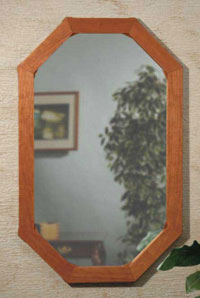
We would like to know how to refinish old mirrors.
Tim Inman: Mirror resilvering has been one of my specialties for decades, and I still make and sell the necessary chemicals and instructional DVDs. However, resilvering is not a simple “DIY” thing It requires some specialized workspace, training, an ability to follow directions exactly and the ability to tolerate frustration if at first one does not succeed. Plus, working with glass has its dangers. That said, the process is pretty simple. The old paints are removed from the back of the mirror with ordinary paint removers. The old metal plating is removed (usually silver, but sometimes zinc or even lead). This is done with specialty chemicals. Toilet bowl cleaners and battery acid can work, but the risk factors increase any time you fiddle with a home chemistry set sans instructions. When the mirror is reduced to nothing but a piece of clear glass, the surfaces are repolished using various abrasives by hand. Machine polishing is not a good option even if available. Following polishing, the glass surface is chemically sensitized, then replated. The result when using my chemicals is a pure silver plating chemically bound to the glass. This is protected by specialty paints or shellac. The viewing surface is cleaned and polished to complete the task. Another option is to simply remove the old backing and plating, then laminate a “cheater” or piece of new cheap mirror glass against the original mirror glass. This sandwich can give the effect of a resilvered mirror for a while. It isn’t my favorite treatment. It will cloud within a short time, and usually the folks who do this do not understand how important the polished and plated surface of the mirror glass is relative to the quality of the reflected image. Putty knives, paint scrapers and inappropriate chemicals can result in scratched and permanently marred surfaces which can never be successfully restored.





